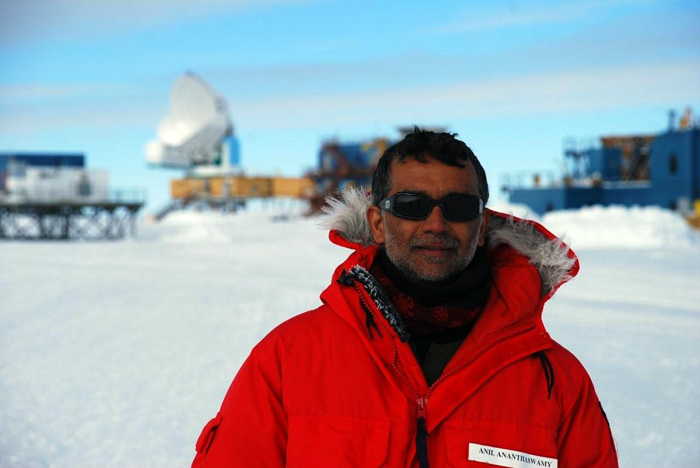|
Cosmological crisisAuthor goes to ends of the Earth to discover the next generation of experimentsPosted November 21, 2008
Before I set out for Antarctica, I kept hearing phrases like “see you on the Ice.” “So how long will you be on the Ice?” The Ice, I realized, was an insider’s term, a tacit acknowledgement of our inability to describe Antarctica with anything but the most mundane language. Francis Spufford said in an anthology of polar literature that “nowhere else on Earth is it so clear that a place has an integrity apart from what we might say about it. Nowhere are words so obviously ineffectual a response to what just, massively, exists, whole and complete and in no real need of translation.” It’s this aspect of Antarctica — that it exists whole and complete — which makes it a treasured destination for cosmologists. The drive to understand the universe has pushed physicists to faraway corners, in search of pristine lands where they can build telescopes and detectors and study the cosmos with a clarity that’s impossible elsewhere on Earth. And the frozen continent is cosmology’s biggest and boldest bet yet. Cosmology Dark energy is the latest and most daunting puzzle to confront cosmologists, adding to another mystery that has haunted them for decades: dark matter And there are other mysteries. What gives the universe its mass? What happened to the antimatter that should have been produced along with matter during the big bang Faced with so many unknowns, and a paucity of new experimental data, theorists have had free rein. Ideas abound, adrift in a sea of speculation. They need direction. Can the next generation of experiments in cosmology and particle physics help anchor the theories to reality? In my book, I set out to attempt an answer. It is a quest that took me from London, where I live and work, to the distant reaches of the Earth, from desolate deserts to the depths of derelict mines, from mountaintops to the bottom of the world, looking for cutting-edge experiments that promise to drag physics out of its theoretical morass. My journey became a metaphor for the forays that physicists are making to the very limits of their understanding, to the edge of reason. More Information
As extreme destinations go, there are few that compare with Antarctica: on average, the coldest, windiest, driest and highest continent on Earth. It’s a land so frigid that a sharp intake of breath can sear one’s lungs. Moist exhaled air freezes in an instant. Mortal danger, in the form of snow-covered crevasses, is only a moment of distraction away. Still, cosmologists cherish the Antarctic Plateau for its thin, dry, stable and unpolluted air, and they are building gigantic telescopes to probe the cosmic microwave background — the radiation left over from the big bang — with a precision that’s impossible to emulate almost anywhere else on Earth. But it’s not just the air above Antarctica that attracts the scientists. They are also turning the kilometers-thick ice at the South Pole But perhaps most romantic are NASA's high-altitude experiments using giant helium balloons Every austral summer, the winds in the upper stratosphere over Antarctica settle into a circumpolar anti-cyclone, which means that at altitudes of about 40 kilometers they start moving in a counter-clockwise direction around the South Pole. If you can get a balloon that high, it will circle over Antarctica, and once the experiment has completed its task, the balloon can be brought down over land, not sea — something that is only possible here. My book — an outcome of my travels — is a paean to the remote regions that are the soul of today’s experimental cosmology. They astonish with their eloquence, whether it’s the Milky Way strewn across a dark Chilean sky or the mighty Mauna Kea in Hawaii, which stands tall, surrounded by nothing but the Pacific Ocean for thousands of miles. Despite their differences, these places have a profound commonality: a stripping away of the unnecessary. A glaciologist I met in Antarctica spoke of the “absolute stillness” he felt on the continent, shorn of all the noise of modern society and faced only with the elements, which were too extreme to ignore. Cosmology needs these places, if it is to solve the pressing questions confronting us about our existence. Anil Ananthaswamy is a consultant for the New Scientist magazine in London. He travelled to the South Pole in 2007-08 under the NSF Antarctic Artists and Writers Program, Award No. 0637460 |



For USAP Participants |
For The Public |
For Researchers and EducatorsContact UsU.S. National Science FoundationOffice of Polar Programs Geosciences Directorate 2415 Eisenhower Avenue, Suite W7100 Alexandria, VA 22314 Sign up for the NSF Office of Polar Programs newsletter and events. Feedback Form |



